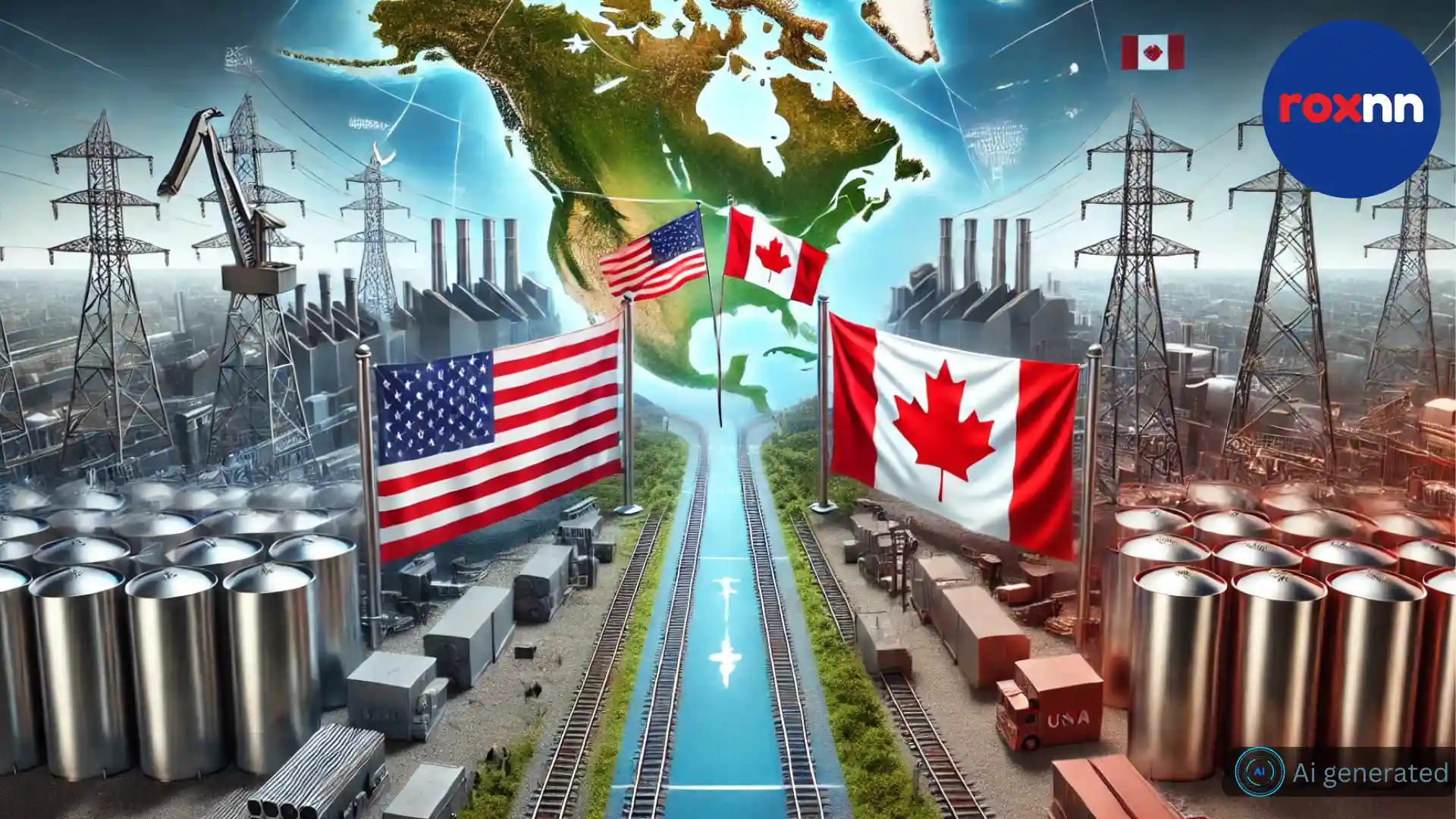In a dramatic turnaround that underscored the volatility of modern trade diplomacy, the White House has officially rolled back its plan to double tariffs on Canadian steel and aluminium, opting instead to maintain the current 25% tariff rate rather than escalating it to 50% as previously announced by former President Donald Trump.
The decision comes in the wake of a tense standoff between the United States and Canada, particularly the province of Ontario, which had threatened to impose a 25% tariff on electricity exports to northern US states. But after intense backroom negotiations and rising fears of an all-out US-Canada trade war, both sides stepped back from the brink—at least for now.
This high-stakes diplomatic tug-of-war unfolded on a day already rattled by financial uncertainty, with US stock markets suffering their worst day of 2025, primarily driven by global concerns over the Trump administration’s aggressive trade policies. The tariff reversal offered a temporary sense of relief, but underlying tensions remain high, and the broader implications for North American trade policy and political dynamics are only beginning to take shape.
The Trade Flashpoint: Steel, Aluminium, and Electricity
At the heart of the crisis was Trump’s abrupt announcement to double tariffs on Canadian steel and aluminium from 25% to 50%, ostensibly in retaliation for Ontario’s proposed electricity tax. The initial move sent shockwaves through both markets and diplomatic channels, as industry leaders feared a cascading effect on pricing, supply chains, and cross-border business partnerships.
However, in a key development, Ontario Premier Doug Ford confirmed that his province would temporarily suspend the electricity tariff, leading to a softer stance from Washington. US officials then announced that tariffs would remain at 25%, not escalate as previously threatened.
Premier Ford further disclosed that talks are ongoing with US Commerce Secretary Howard Lutnick, who has formally invited him to Washington to continue negotiations, signaling a potential path toward a more cooperative trade framework.
Trump’s “National Emergency” on Electricity: A Political Power Play
Despite the de-escalation, President Trump doubled down rhetorically, claiming he would declare “a national emergency on electricity” in northern US states impacted by Canadian energy exports. While the legal and economic implications of such a declaration remain unclear, analysts believe this was more of a political gesture than a practical measure.
At the same time, Trump met with a delegation of business CEOs in Washington, attempting to shore up support among domestic manufacturers who may benefit from protectionist policies. However, the broader business community remains divided, with many warning that such tariffs could backfire by driving up raw material costs and weakening international partnerships.
Canada’s Political Awakening: A Nation Rallies Around Its Flag
If Trump’s tariff threats were meant to divide and weaken Canada, they appear to have had the opposite effect. In a rare show of national unity and political revival, Canada’s Liberal Party has experienced a sudden surge in public support, rallying under a banner of economic sovereignty and trade resilience.
During the party’s recent leadership election, newly appointed leader Mark Carney delivered a rousing speech: “In trade, as in hockey, Canada will win.” The crowd erupted in applause, reflecting a newfound determination to resist foreign pressure and protect national interests.
Political analysts are now predicting a significant electoral shift, with Liberals regaining momentum against the Conservatives, driven by an electorate increasingly wary of American intervention in Canadian economic affairs.
Public Sentiment: “We Are Not For Sale”
Beyond the political stage, public sentiment in Canada has turned fiercely patriotic. Outside Parliament, large crowds gathered holding signs like “We Are Not For Sale” and “Not a 51st Anything”, rejecting any notion that Canada would bow to US demands.
One protestor summed up the national mood by saying, “If there’s anybody out there threatening my home, I want to be a part of the fight against that.” This grassroots activism is reinforcing political action and pushing leaders toward a more assertive foreign policy.
Market Reaction: Financial Turmoil and Stabilization
Tuesday’s roller-coaster news cycle also triggered significant market turbulence. Investors were initially rattled by the prospect of a global tariff escalation, leading to the sharpest market drop of 2025 so far. However, news of the rollback helped stabilize sentiment late in the day, although volatility remains a key concern.
The steel and aluminium sectors, in particular, experienced heavy trading, with several Canadian exporters temporarily halting new contracts until more clarity emerges. US-based manufacturers also expressed concerns about supply chain disruptions and potential retaliatory measures from other trading partners.
What Lies Ahead: Uncertainty Remains Despite Temporary Peace
While today’s rollback has averted immediate crisis, long-term uncertainty persists. The Trump administration’s willingness to weaponize tariffs and invoke emergency powers has shaken confidence in North American trade agreements, including USMCA (United States–Mexico–Canada Agreement).
Experts warn that this could lead to a reassessment of energy and metal export strategies by Canada, possibly diversifying away from US dependency in the long run. On the other hand, American states reliant on Canadian electricity and metals may push back against federal policies, creating internal political friction.
A Temporary Truce in a Longer Trade Battle
The rollback of tariffs may offer a short-term reprieve, but the larger dynamics of US-Canada trade relations are far from resolved. As both countries grapple with changing economic realities, political posturing, and growing nationalism, the path forward remains uncertain.
Yet, one thing is clear: Canadians are no longer passive observers in the face of US economic aggression. With a rising tide of national pride, renewed political momentum, and an increasingly engaged citizenry, Canada is preparing to fight for its place in the global trade arena—and the world is watching.

